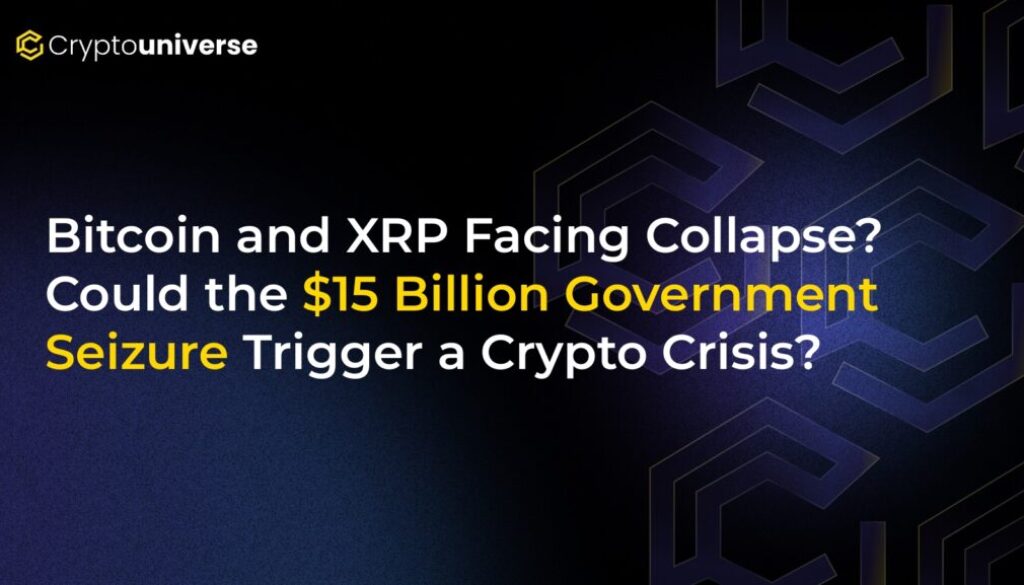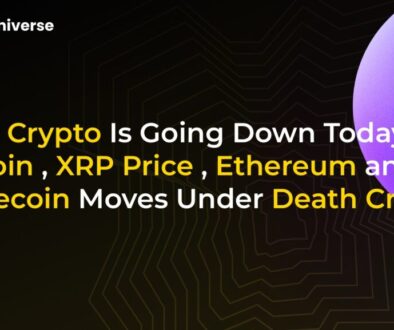Bitcoin and XRP Facing Collapse? Could the $15 Billion Government Seizure Trigger a Crypto Crisis?

A Record-Breaking Seizure Shakes the Crypto Market to Its Core
The cryptocurrency world has been rocked by an unprecedented event: the U.S. government has reportedly seized an astonishing $15 billion in Bitcoin, marking the largest single crypto confiscation in history. The news sent immediate shockwaves through the market, rattling investor confidence and raising urgent questions about the future of digital assets. For many, this event challenges the very notion of decentralized, untouchable wealth that crypto promises. With top assets like Bitcoin and XRP caught in the crossfire, many are asking if this is the black swan event that could trigger a wider market collapse.
What Happened? Unpacking the <$15 Billion Government Seizure>
While details are still emerging, the seizure of such a massive amount of Bitcoin represents a significant escalation in government action within the digital asset space. Historically, government confiscations are linked to illicit activities, such as shutting down darknet markets like the Silk Road or recovering funds from major hacks and ransomware attacks. This seizure, by its sheer scale, dwarfs all previous operations combined.
The immediate fallout is a wave of fear, uncertainty, and doubt (FUD) spreading among investors. The key concerns are:
- The Power of the State: It serves as a stark reminder that while the Bitcoin network itself is decentralized, the endpoints—the people and organizations holding the private keys—are not beyond the reach of law enforcement.
- Potential Market Dump: The market is now bracing for the possibility of the government liquidating this massive BTC holding. An auction of $15 billion worth of Bitcoin could flood the market, putting immense downward pressure on its price.
- Eroding Trust: For many, the core appeal of Bitcoin is its resistance to censorship and seizure. This event, however, demonstrates that under certain circumstances, even the king of crypto can be confiscated.
Why Are Bitcoin (BTC) and XRP in the Spotlight?
The seizure has cast a long shadow over the entire crypto ecosystem, but Bitcoin and XRP are feeling the heat most acutely for different reasons.
Bitcoin: A Test of Decentralization
As the asset directly seized, Bitcoin is at the epicenter of this storm. The event forces a difficult conversation about the practical limits of decentralization. While no government can shut down the Bitcoin network, they can certainly target and seize assets from individuals or entities within their jurisdiction. This has led to a renewed emphasis on the importance of self-custody. The age-old crypto mantra, “not your keys, not your coins,” has never been more relevant. If your assets are held by a third-party custodian, they are only as secure as that custodian is from government action.
XRP: Collateral Damage and Regulatory Fears
XRP’s inclusion in the conversation stems from broader market sentiment and its own history of regulatory battles. When a government makes a move this significant against one major crypto, it signals a more aggressive stance towards the entire industry. For an asset like XRP, which is still entangled in a long-running legal case with the U.S. Securities and Exchange Commission (SEC), this development is particularly unnerving. Investors fear that this seizure could embolden regulators to pursue stricter enforcement actions across the board, and assets with perceived centralization points, like XRP, could become prime targets.
Is a Full-Blown Crypto Crisis Imminent?
The term “crypto crisis” is being thrown around, but what is the realistic impact? This seizure is a multi-faceted threat that could destabilize the market in several ways:
- Price Volatility: The most immediate threat is the potential liquidation of the seized Bitcoin. Government agencies typically auction off seized assets. The timing and method of such a sale would be critical. A slow, phased-out sale might be absorbed by the market, but a rapid dump could trigger a catastrophic price drop.
- Regulatory Crackdown: This event provides powerful ammunition for politicians and regulators calling for stricter controls on cryptocurrencies. We can expect renewed calls for enhanced surveillance, stricter KYC/AML (Know Your Customer/Anti-Money Laundering) laws, and regulations targeting self-custody wallets.
- Shaken Investor Confidence: The psychological impact cannot be overstated. If investors believe their assets can be easily seized, they may be less willing to hold large amounts, potentially leading to a capital flight from the market or a shift towards privacy-focused coins.
How to Navigate the Uncertainty
While the situation is alarming, panic is rarely a sound strategy. For investors, this is a time for caution, education, and strategic thinking.
- Re-evaluate Your Security: Take this as an urgent call to understand and implement self-custody. Research hardware wallets like Ledger or Trezor to ensure you, and only you, control your private keys.
- Stay Informed, Not Influenced: Follow reputable news sources for updates on the seizure and potential government actions. Be wary of social media hype and FUD designed to manipulate market sentiment.
- Focus on the Long-Term: Cryptocurrency has weathered countless storms, from the Mt. Gox hack to the collapse of FTX. While this event is significant, the underlying technology and long-term vision for a decentralized financial system remain intact.
The Bottom Line
The <$15 billion government seizure> is a landmark event that will be debated and analyzed for years to come. It’s a painful but powerful lesson on the intersection of decentralized technology and centralized power. While the short-term outlook for Bitcoin, XRP, and the broader market is fraught with volatility and uncertainty, it also forces the industry to mature. This crisis will accelerate conversations around true decentralization, the importance of self-custody, and the inevitable path toward a clear regulatory framework. Whether this leads to a collapse or a stronger, more resilient ecosystem depends on how the industry and its community respond to this monumental challenge.


